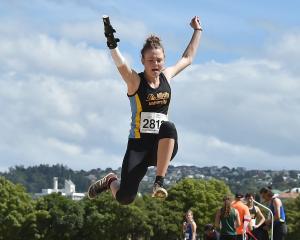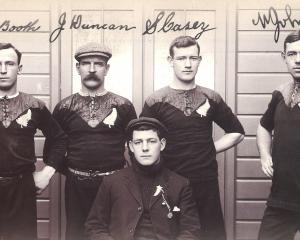
Internationally respected printmaker Barry Cleavin grew up in Dunedin and, after 50 years in Christchurch, now lives in Portobello and draws inspiration from returning to his southern roots.
His recent series of 36 works focusing on Hereweka (Harbour Cone) draws partly on earlier experiences and memories.
He was also inspired by celebrated Japanese printmaker Katsushika Hokusai (1760-1849) and his series Thirty-six Views of Mt Fuji.
After returning to the city of his birth from earthquake-hit Christchurch in 2013, Cleavin spends much of his time in his big Portobello workshop, which began life as his house's ''magnificent four-car garage''.
''It's the best workshop that I've worked in.
''I couldn't do without it.
''The workshop will be my life at least five to six hours a day.
''I use up as many hours in one day as I can trying to work out my problems.''

He acknowledges the influence of all his art teachers, ''whether they've been good or bad teachers'', and enjoys a lively dialogue with several overseas artists via Facebook.
He also highlights the influence of leading Hungarian-American artist Gabor Peterdi (1915-2001), a former Harvard University professor of printmaking, whom he once worked with in Honolulu.
Cleavin makes notes and plans his projects.
''Mostly I reduce the world to absurdity; in that form it is manageable.''
And for decades he has been fascinated by bones and skeletons.
He admits to being of a melancholy turn of mind and the sense of memento mori (remember you will die) pervades much of his work. But skeletons are ''a sublime form of sculpture, the way they lock in together, they way they actually form shapes''.
Drawing plays a crucial role in his artistic practice, irrespective of the particular printmaking technique he later adopts for each work.
''It's everything. That's the germ of anything that I think of.'
American artist Saul Steinberg referred to drawing as ''a way of reasoning on paper''.

Dunedin is a ''home place'', where other family members also live, including his son, Chaim Cleavin.
''It's a turangawaewae, a place to stand. The pull towards that has always been very strong, just a natural thing. I lived in Dunedin until I was about 22.''
Returning South was also a return to ''the places I used to go to, like Harbour Cone, the museums''.
''They're actually astonishingly resonant places.''
But printmaking ultimately involves going to work, ''the same way as others go to work''.
''Any romantic notions concerning my affiliations to any rarefied 'art' context, practice or being special left me long ago.
''I make things because that is what I do, and what it is that I like to do.
''I have an ACC levy. Tax. Rates. Insurance. Commerce.
''I could say that every hour that I am awake is a working hour - sifting through things that I plot into place for telling my visual stories, and the things that I want to tell others about the world.
''I am locked into visually telling things as they seem to me to be.''













